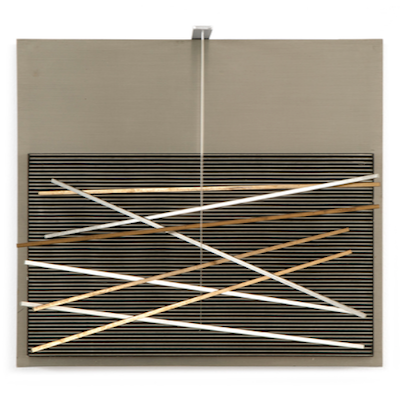
Details
Artist
Styles
// Mappenwerk Regen by Günther Uecker is a limited-edition etching created in 1992, capturing the essence of rain through minimalist and poetic typography. In this piece, Uecker presents a series of German words handwritten in a simple, childlike script, with phrases like Regen trommelnd (Rain drumming) and zärtlich weinend (tenderly weeping). The unadorned, raw handwriting amplifies the emotional resonance of the words, evoking the soft, rhythmic sound of raindrops and a gentle melancholy. Known for his tactile and sensory-driven works, Uecker here distills an experience of rain into language, allowing viewers to connect with its meditative quality. The etching measures 108 cm in height and 76 cm in width, making it a powerful yet understated exploration of nature and emotion.
Mappenwerk Regen, 1992
form
Medium
Size
108 x 76 cm
- Inches
- Centimeters
Edition
Price
Details
Artist
Styles
// Mappenwerk Regen by Günther Uecker is a limited-edition etching created in 1992, capturing the essence of rain through minimalist and poetic typography. In this piece, Uecker presents a series of German words handwritten in a simple, childlike script, with phrases like Regen trommelnd (Rain drumming) and zärtlich weinend (tenderly weeping). The unadorned, raw handwriting amplifies the emotional resonance of the words, evoking the soft, rhythmic sound of raindrops and a gentle melancholy. Known for his tactile and sensory-driven works, Uecker here distills an experience of rain into language, allowing viewers to connect with its meditative quality. The etching measures 108 cm in height and 76 cm in width, making it a powerful yet understated exploration of nature and emotion.
- Recently Added
- Price (low-high )
- Price (high-low )
- Year (low-high )
- Year (high-low )
What is kinetic art?
Kinetic art is an international movement that emerged in the 1920s and gained prominence in the 1960s, referring to art that involves both apparent and real motion. It encompasses any medium that includes movement, either relying on actual motion for its effect or being perceived as moving by the viewer. Early examples include canvas paintings designed to create optical illusions of movement. Today, kinetic art often refers to three-dimensional figures and sculptures, such as those operated by machines or those that move naturally. The movement covers a variety of styles and techniques that frequently overlap.





























